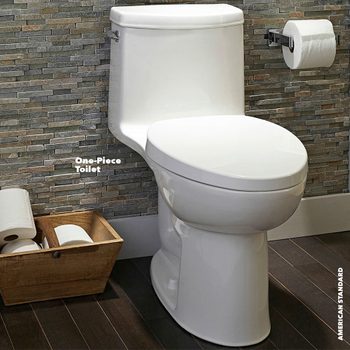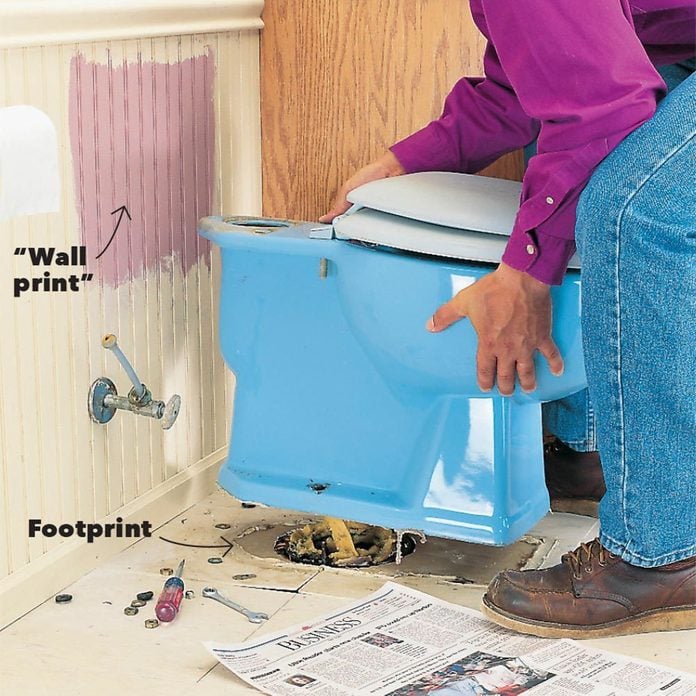Toilet Shopping Tips
Updated: Jan. 19, 2023Want to buy a new toilet? There are an array of options. We offer these tips for the next time you go toilet shopping.

Insulated tank
If summers are humid where you live and you don’t have air conditioning, you’ve probably noticed your toilet “sweating” quite a bit. Condensation forms on the outside, which can drip down and make a mess or even rot out your floor. Some toilets are available with insulated tanks to prevent condensation problems.
Bowl height

This is the distance from the floor to the top of the toilet bowl’s rim. The standard height for toilets used to be 14 to 15 in. But today, you’ll find toilets that are 16 to 18 in. high. These are often called “comfort height” or “ADA height” or something similar. The additional height makes getting on and off the toilet easier and is more comfortable for lots of people, especially the elderly. Child heights of 10 to 14 in. are also available.
One-piece vs. two-piece

A two-piece toilet—a separate tank and bowl—is the most common design found in homes. But one-piece models are available. While two-piece toilets are less expensive, one-piece toilets often have shorter tanks and are easier to clean. Some people also like one-piece toilets for their smooth, sleek appearance.
Cost

When it comes to toilets, expensive doesn’t automatically mean better performance. In fact, some of the best models tested by MaP are relatively inexpensive, while costlier ones offer only marginal performance.
Color

Fashion is fickle. Stick with a white or an off-white toilet so you’re not stuck with a color you’ll hate a few years down the road.
Flush-handle location

If you have lots of room above or beside your toilet, this probably isn’t all that important. But if your toilet will be right up against a wall or cabinet, choose one with the handle on the opposite side or on top of the tank.
Rough-in

The distance of the flange bolts—the two bolts that anchor your toilet bowl to the floor—to the wall behind the toilet is known as the “rough-in” dimension (make sure to account for the thickness of your baseboard, paneling or tile). Twelve-inch rough-ins are the most common, but in some older houses you may find 10-in. or 14-in. rough-ins. Be sure to measure your rough-in before you go toilet shopping so you’ll know what to ask for.
Bowl shape

Most toilets sold today have either round-front bowls or elongated-front bowls. Round-front bowls are great if space is tight. Elongated bowls have a longer rim—as much as 2 in. longer—and require more space (there have been cases where doors and drawers couldn’t be opened after installation). On the plus side, elongated bowls are generally more comfortable for adult use and help improve hygiene. Check manufacturer websites for dimensions of bowls and measure your space before deciding on the bowl shape. Discover why toilet seats shaped like a U are more hygienic.
“Wall print”

If you install a new toilet with a smaller tank, you might have to paint the part of the wall that was covered by the old toilet tank.
Footprint

If you’re replacing an old toilet that has a large footprint (the base covers a large floor area), you might have to patch and repair the part of the floor that was covered by the old toilet. You may even have to replace the entire floor before installing a new toilet with a smaller footprint.
Check out How to Repair a Leaking Toilet, Parts of a Toilet and How to Improve Toilet Performance.




